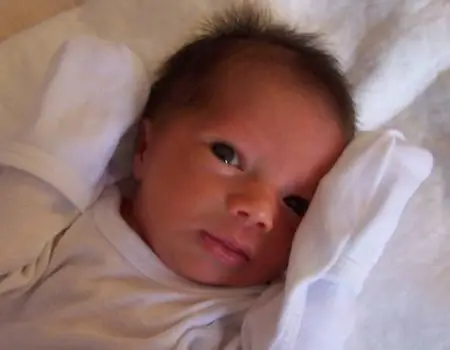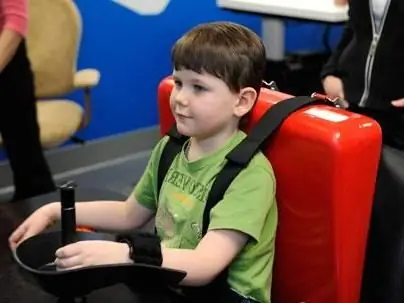- Author Curtis Blomfield [email protected].
- Public 2023-12-16 20:44.
- Last modified 2025-01-23 17:01.
Cerebral palsy manifests itself in impaired motor function, which is caused by trauma or abnormal development of the brain, most often before birth. Usually, the symptoms of the disease appear in infancy and preschool age. Cerebral palsy causes rigidity of the limbs and torso, poor posture, unsteadiness when walking, involuntary movements, or all of these. People with cerebral palsy often have mental retardation, hearing and vision problems, and seizures. Performing certain procedures can help improve a person's functional abilities.
Reasons

In many cases, it is not known exactly why cerebral palsy occurs. Cerebral palsy is the result of brain development problems that can result from factors such as:
- random mutations in genes that control brain formation;
- infectious diseases of the mother affecting the development of the fetus (for example, rubella, chickenpox, toxoplasmosis, syphilis, cytomegalovirus, etc.);
- impaired blood supply to the brainbaby;
- Infant infections that cause inflammation of the brain or its membranes (eg, bacterial meningitis, viral encephalitis, severe jaundice, etc.);
- head injury.
Symptoms

Cerebral palsy can present with a variety of symptoms. Movement and coordination problems may include:
- changes in muscle tone;
- stiff neck;
- lack of muscle coordination;
- involuntary movements and trembling;
- motor retardation (eg, unable to hold head, sit up on their own, or crawl at an age when he althy babies already do);
- difficulty walking (e.g. walking with bent legs or walking on toes);
- trouble swallowing and excessive salivation;
- speech delay;
- difficulty with precise movements (e.g. cannot hold a spoon or pencil);
- vision and hearing problems;
- mental retardation;
- dental problems;
- urinary incontinence.
Diagnosis

To diagnose cerebral palsy, a doctor must do a brain scan. This can be done in several ways. The preferred test is MRI, which uses radio waves and a magnetic field to produce detailed images. An ultrasound and CT scan of the brain can also be performed. If the child has seizures, the doctor may order an EEG to determinewhether he suffers from epilepsy. To exclude other diseases that have symptoms similar to cerebral palsy, you should check the blood.
Treatment
As already mentioned, there is no cure for cerebral palsy. Rehabilitation aims to minimize his symptoms. This will require long-term care with the help of an entire medical team of specialists. This group may include a pediatrician or physiotherapist, pediatric neurologist, orthopedist, psychologist or psychiatrist, speech therapist. Treatment uses medications to help reduce muscle density and improve functional ability. The choice of specific medicines depends on whether the problem affects only certain muscles or affects the whole body. Cerebral palsy can also be treated with non-drug methods: with the help of physiotherapy, occupational therapy, speech therapy. In some cases, surgery may be required.






